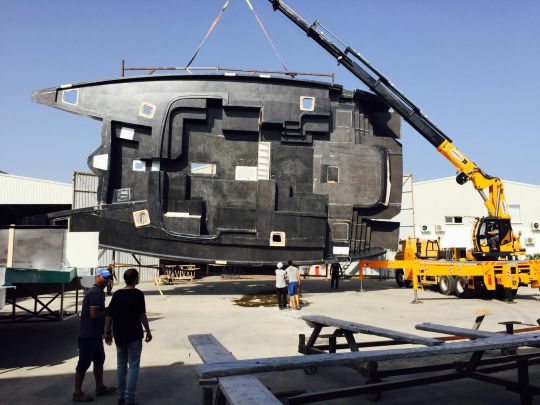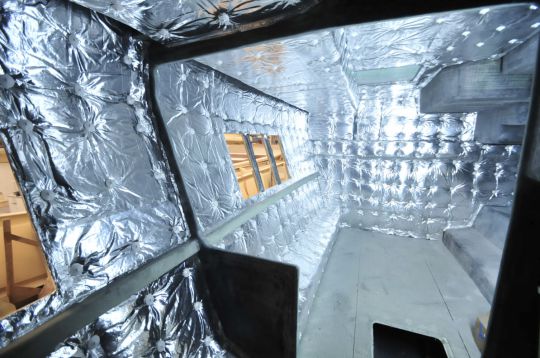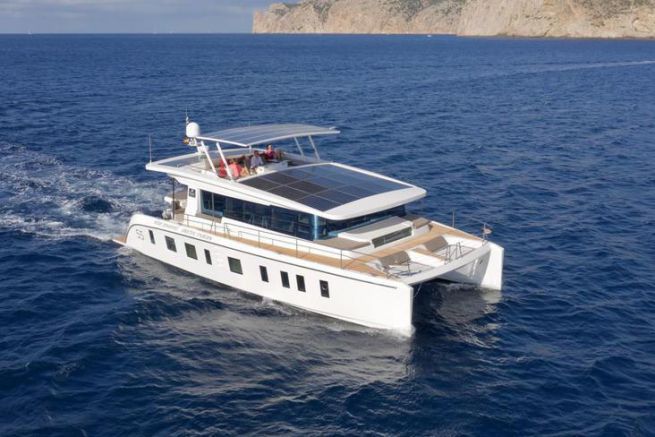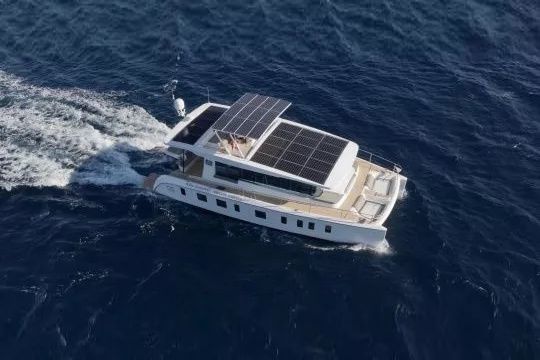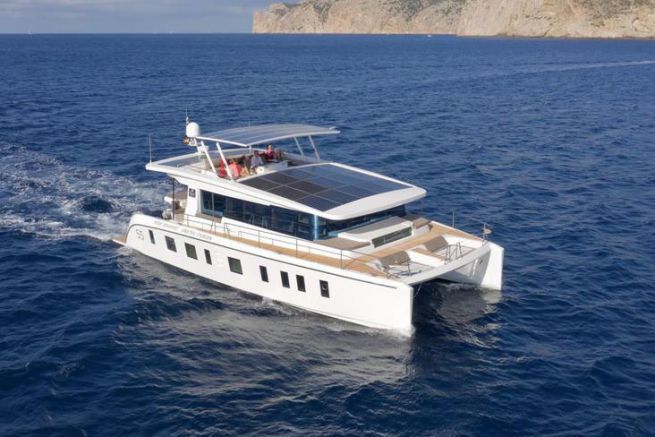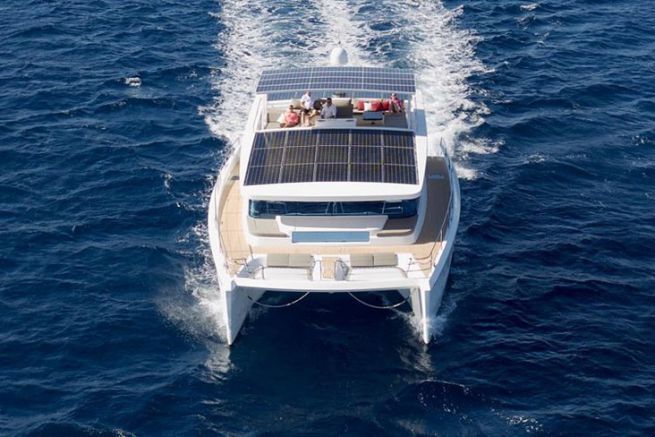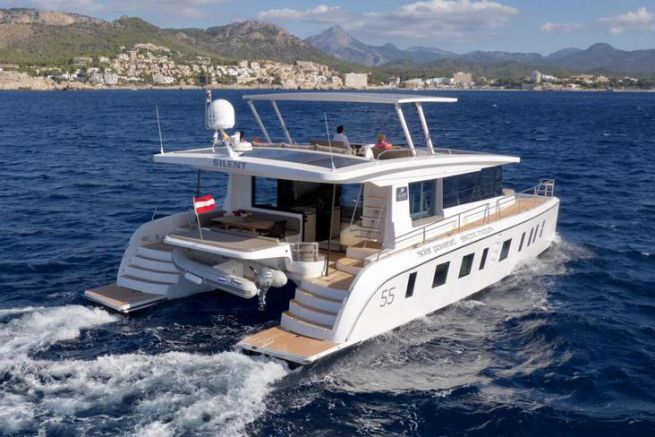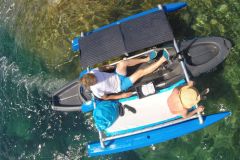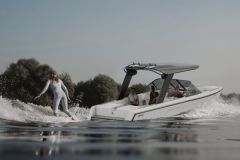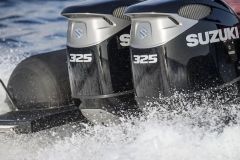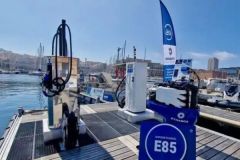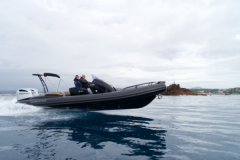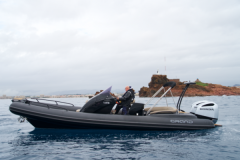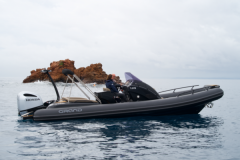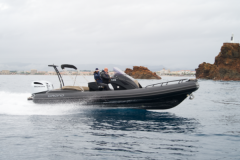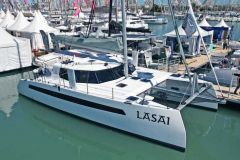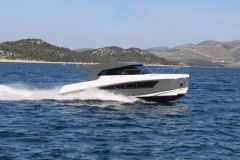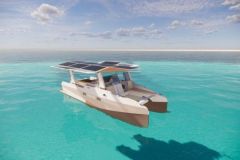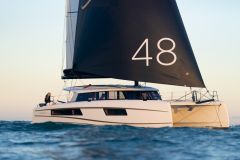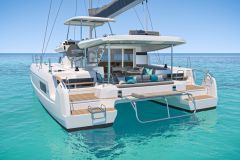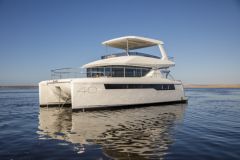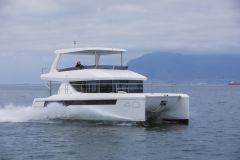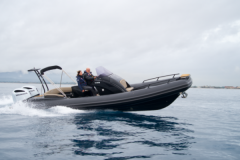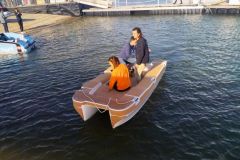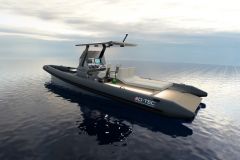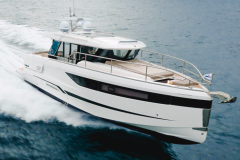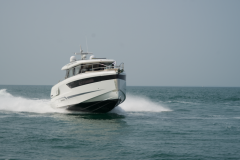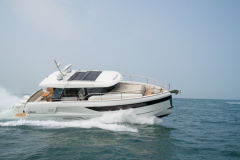A first all-electric catamaran
The brand was born in 2010, under the name Solarwave, from the will of their co-founders, Heike and Michael Köhler, to use clean and silent energy to propel and inhabit a long-distance cruising catamaran. After 23 years of sailing and four years of research, they selected the multihull for its low resistance to forward motion and its available surface area. Then they build a first 46-foot catamaran equipped with electric motors, an XXL battery pack, a roof covered with solar panels and set off for a five-year test in the Black Sea and the Mediterranean. More than 2500 hours of electric motoring during 140 weeks with guests and journalists, made it possible to achieve what everyone thought impossible: complete autonomy, day and night, with no CO² emissions, even in cloudy conditions, and in a boat providing a level of maritime and domestic performance identical to that of a launch equipped with an atmospheric engine and a generator. The installed generator operated for only 50 hours during the five years of testing, which says a lot about the relevance of these studies and the performance obtained.
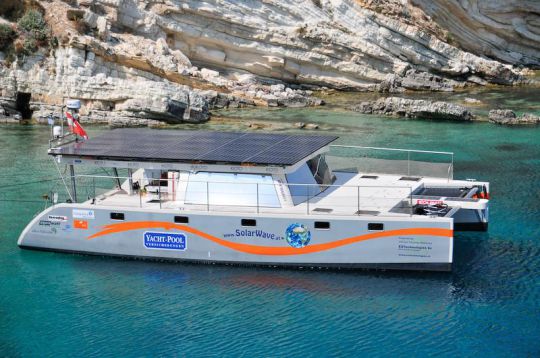
Autonomy, comfort and power
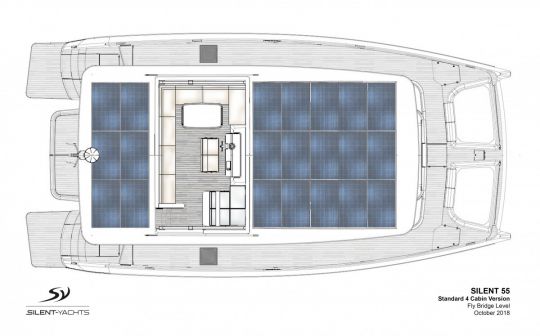
After a first 64-foot boat, the brand, renamed Silent-Yachts, launches in 2017 a 55-foot boat with two 30 kW engines and 30 solar panels. As the 64' has a top speed of 8-9 knots, the company decides to launch in 2019 the E-power+ version with two 250 kW engines, 210KWh of Victron Lithium batteries and a 100 kW generator based on a Volvo D3. The solar generation reaches 10.8 kWpic. Apart from the propulsion, the on-board energy management includes the operation of 12 and 220 volt electrical appliances (without depriving oneself), reversible air conditioning, fresh water production and all other utensils including the recharging of the dinghy's engine, which is also electric.

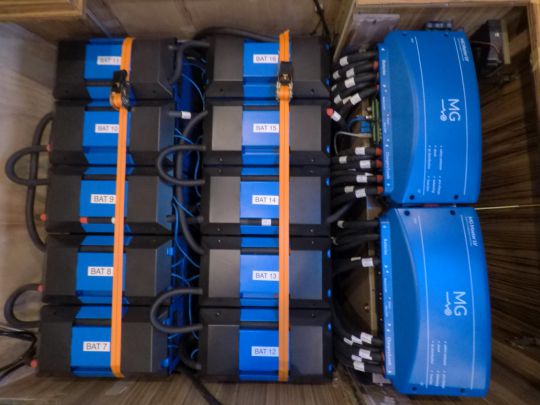
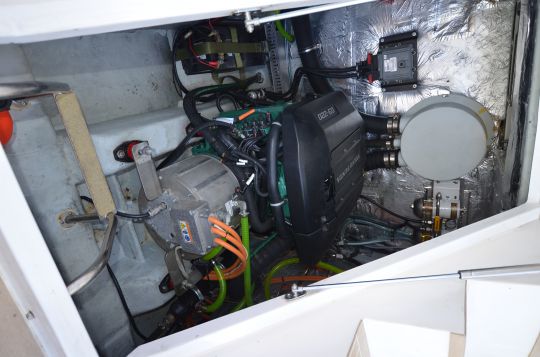
The importance of displacement

While attempts to propel themselves without emitting CO² result in very light boats, with an ultra sober finish and Spartan equipment, this is not the case here and you feel it immediately when you climb aboard. As the weight quotation is essential in order not to consume too much kW/h, the hull and superstructures are entirely made of glass/foam composite with carbon reinforcements, the bulkheads are made of honeycomb sandwich and all the furniture is made of plywood. As a result, the balance is only about 20 light tons, where motor monohulls of the same size would be at least 35. Nevertheless, the impression of soft, serene and reassuring peace of mind is well perceived, as serious sound and heat insulation has been applied to stem the two main defects generated by the carbon.
